Batch updates in policy gradient
Deep Reinforcement Learning in Python

Timothée Carayol
Principal Machine Learning Engineer, Komment
Stepwise vs batch gradient updates
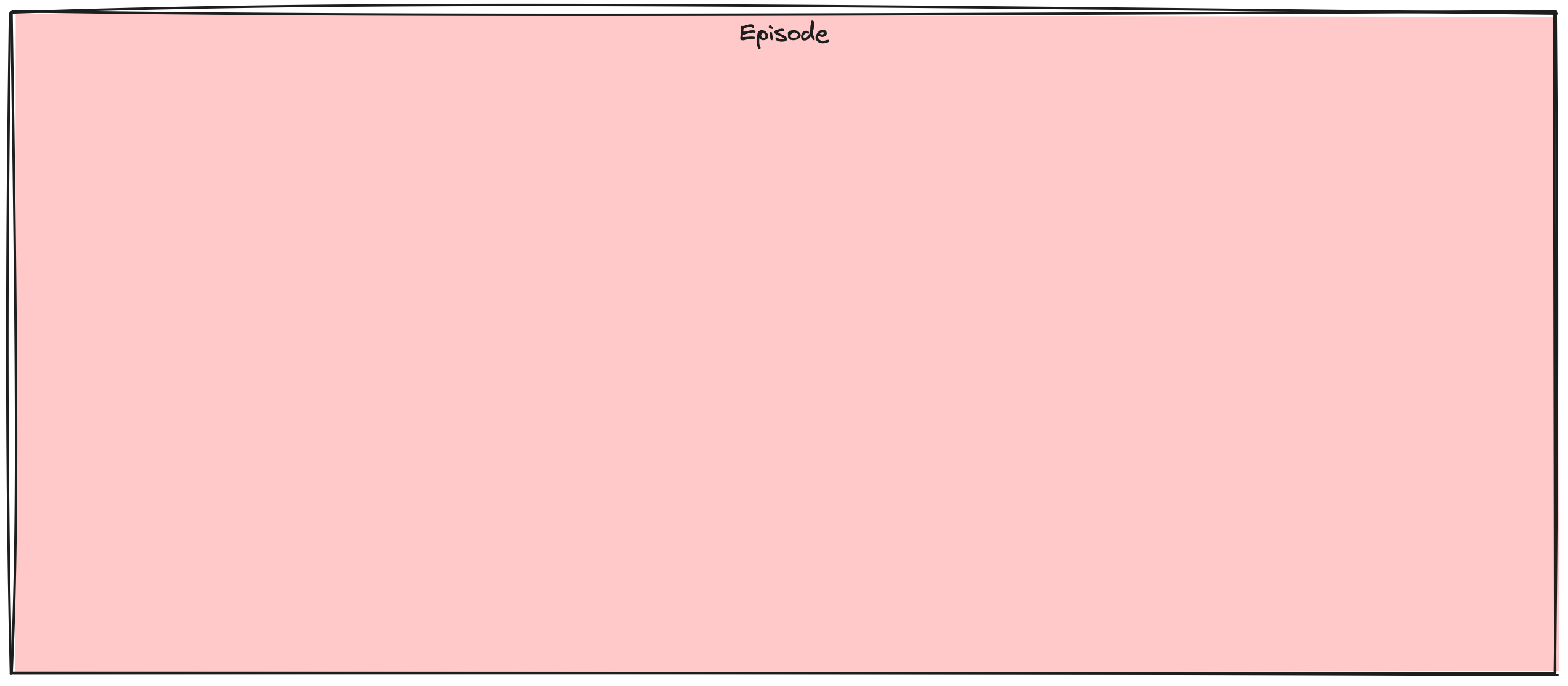
Stepwise vs batch gradient updates
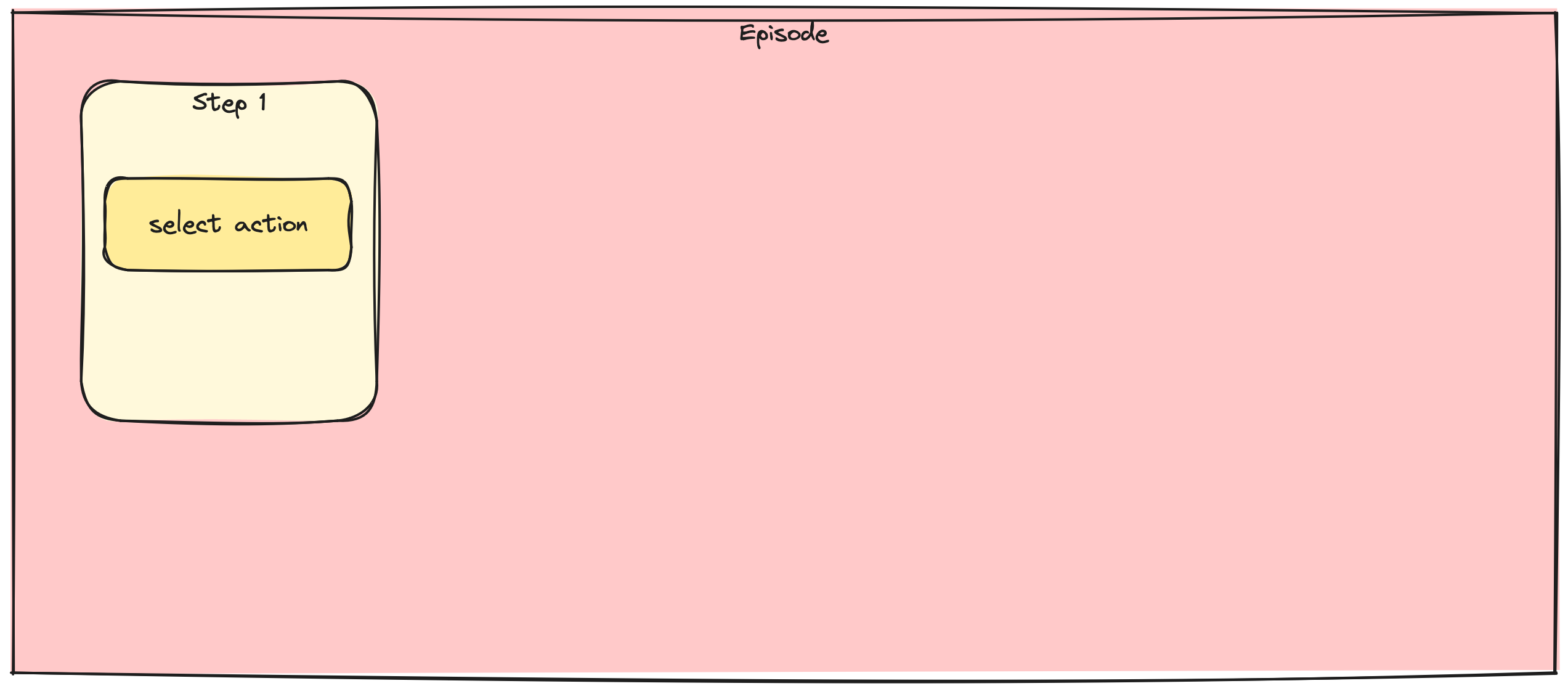
Stepwise vs batch gradient updates
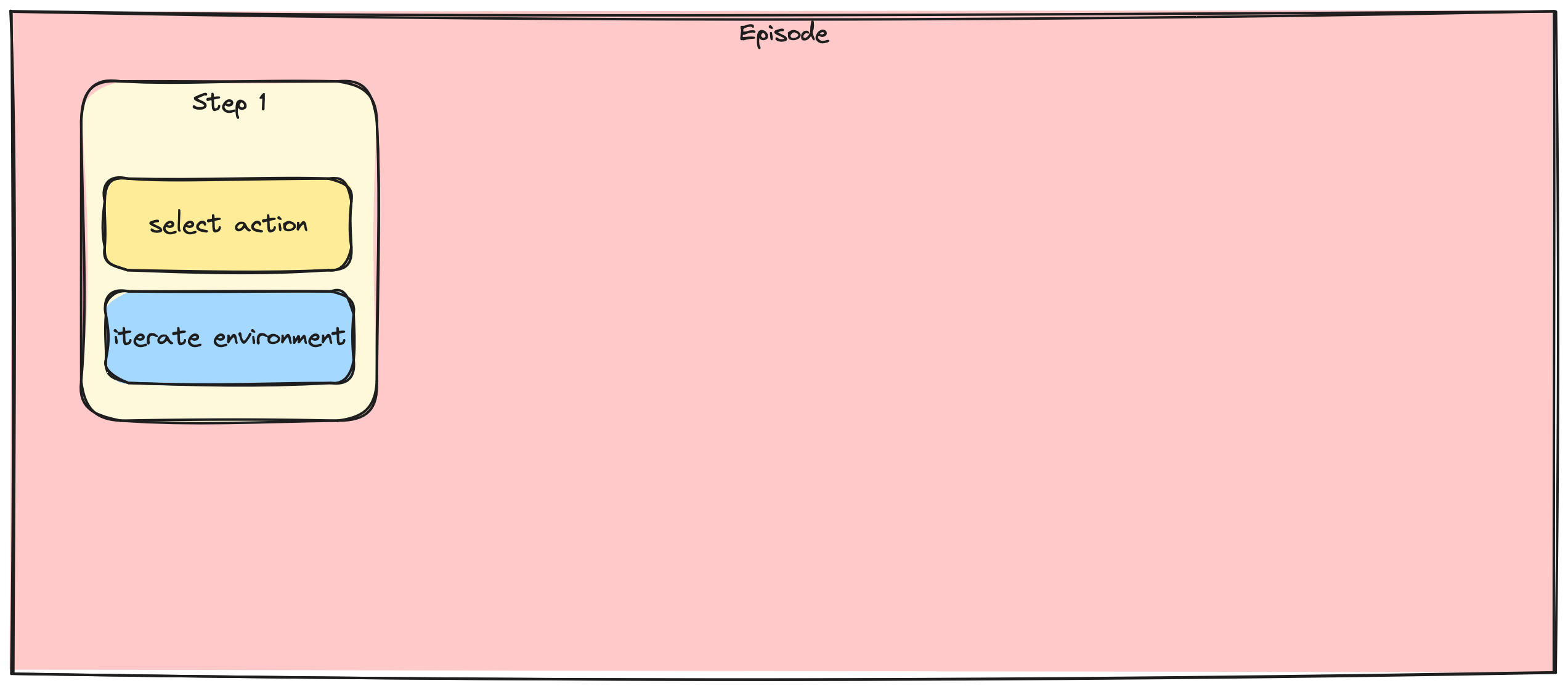
Stepwise vs batch gradient updates
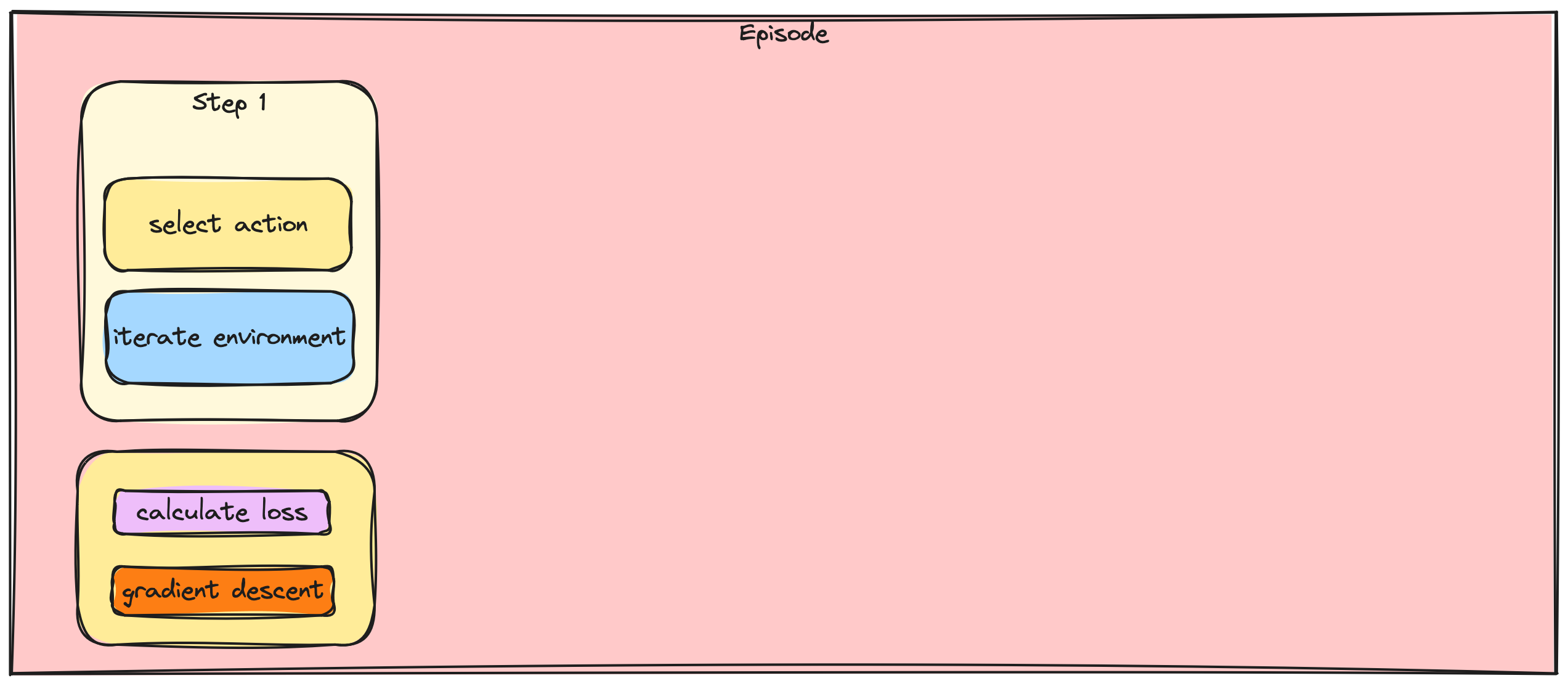
Stepwise vs batch gradient updates
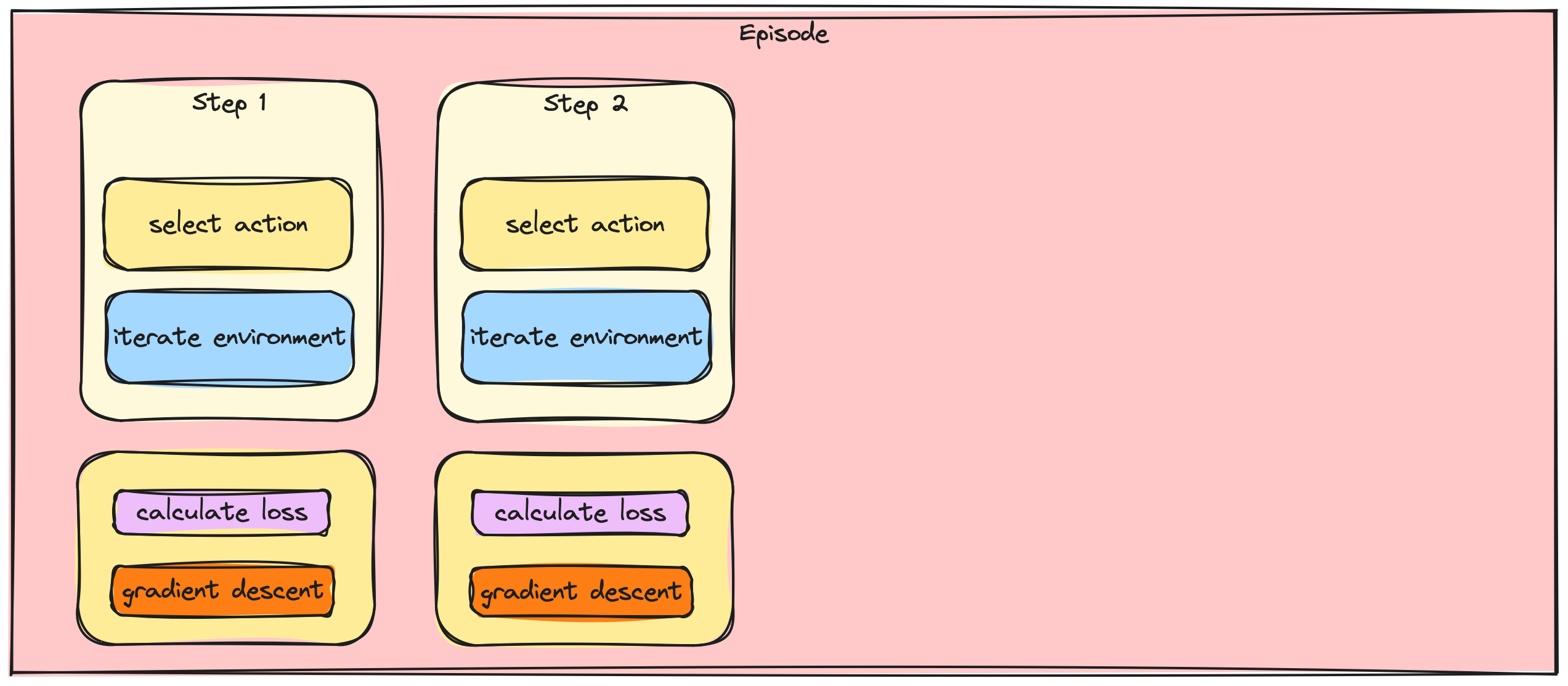
Stepwise vs batch gradient updates
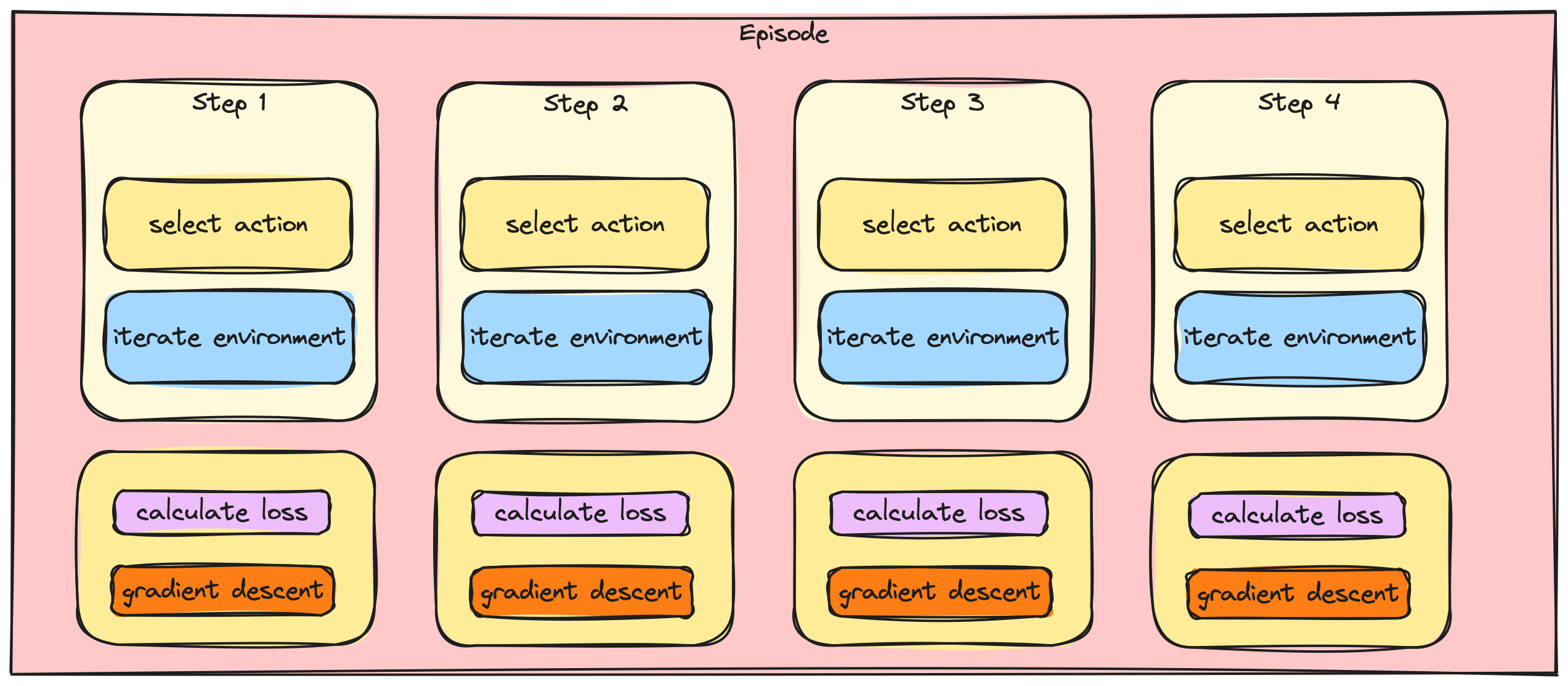
Batching the A2C / PPO updates
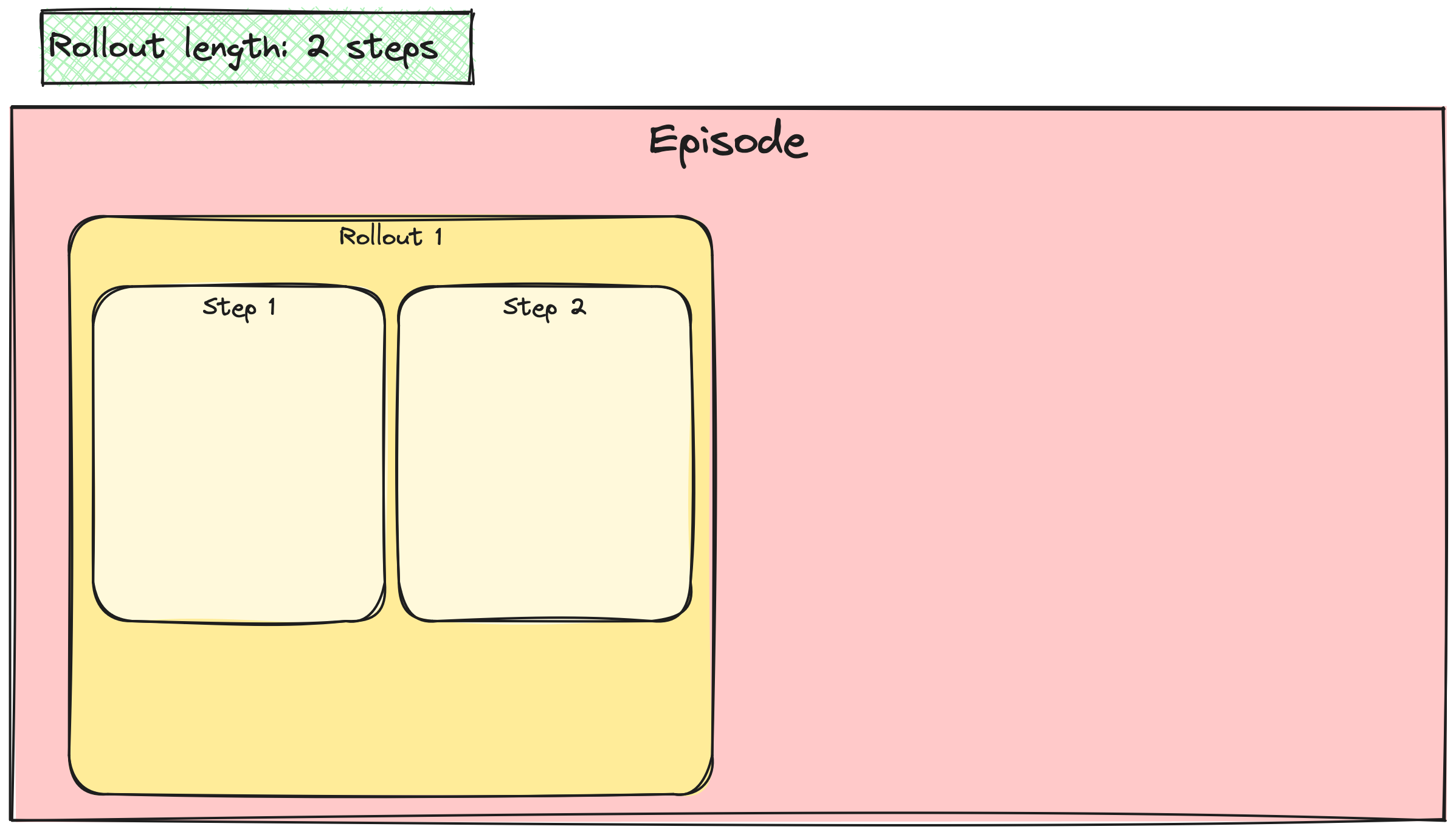
Batching the A2C / PPO updates
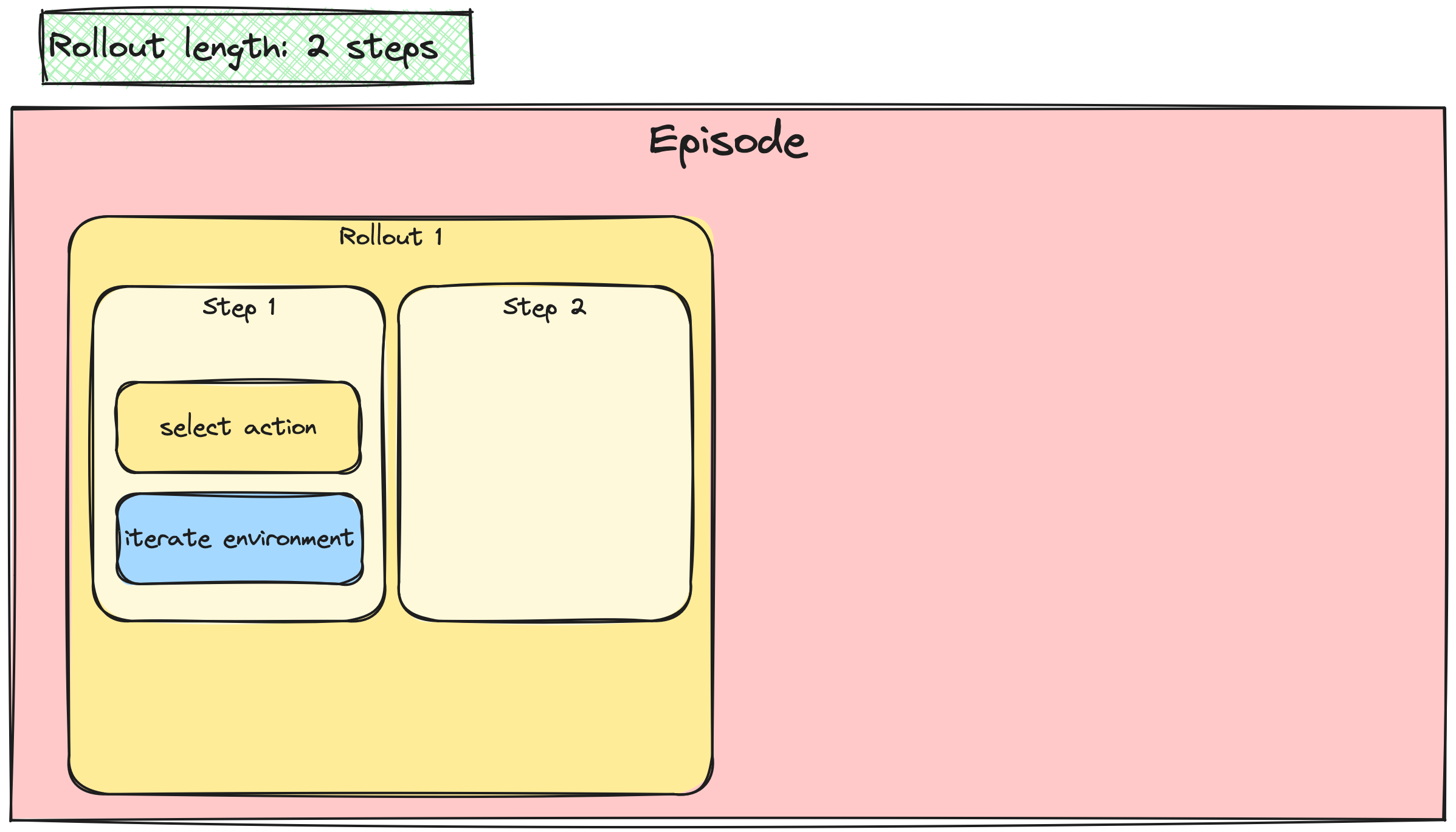
Batching the A2C / PPO updates
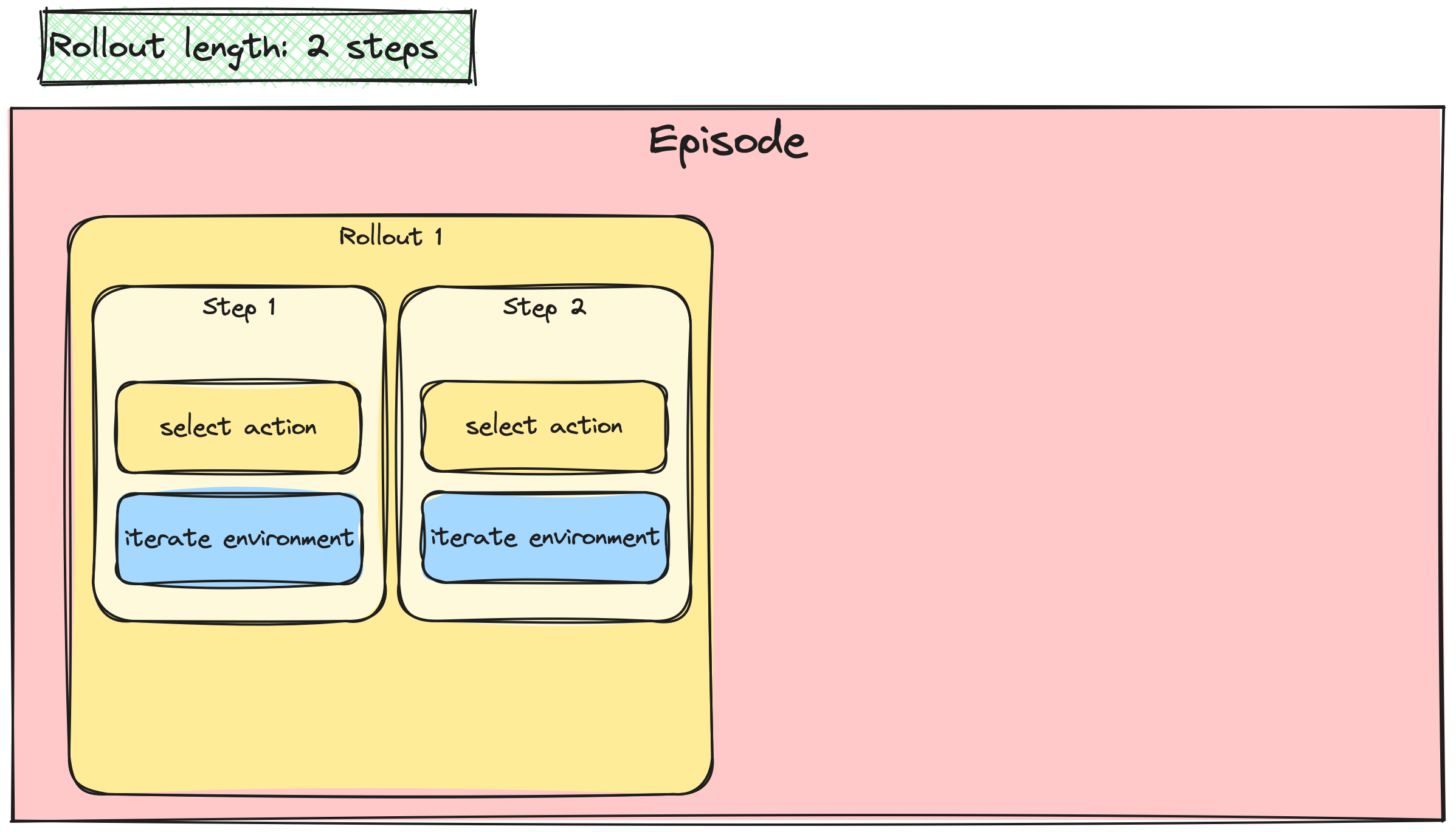
Batching the A2C / PPO updates
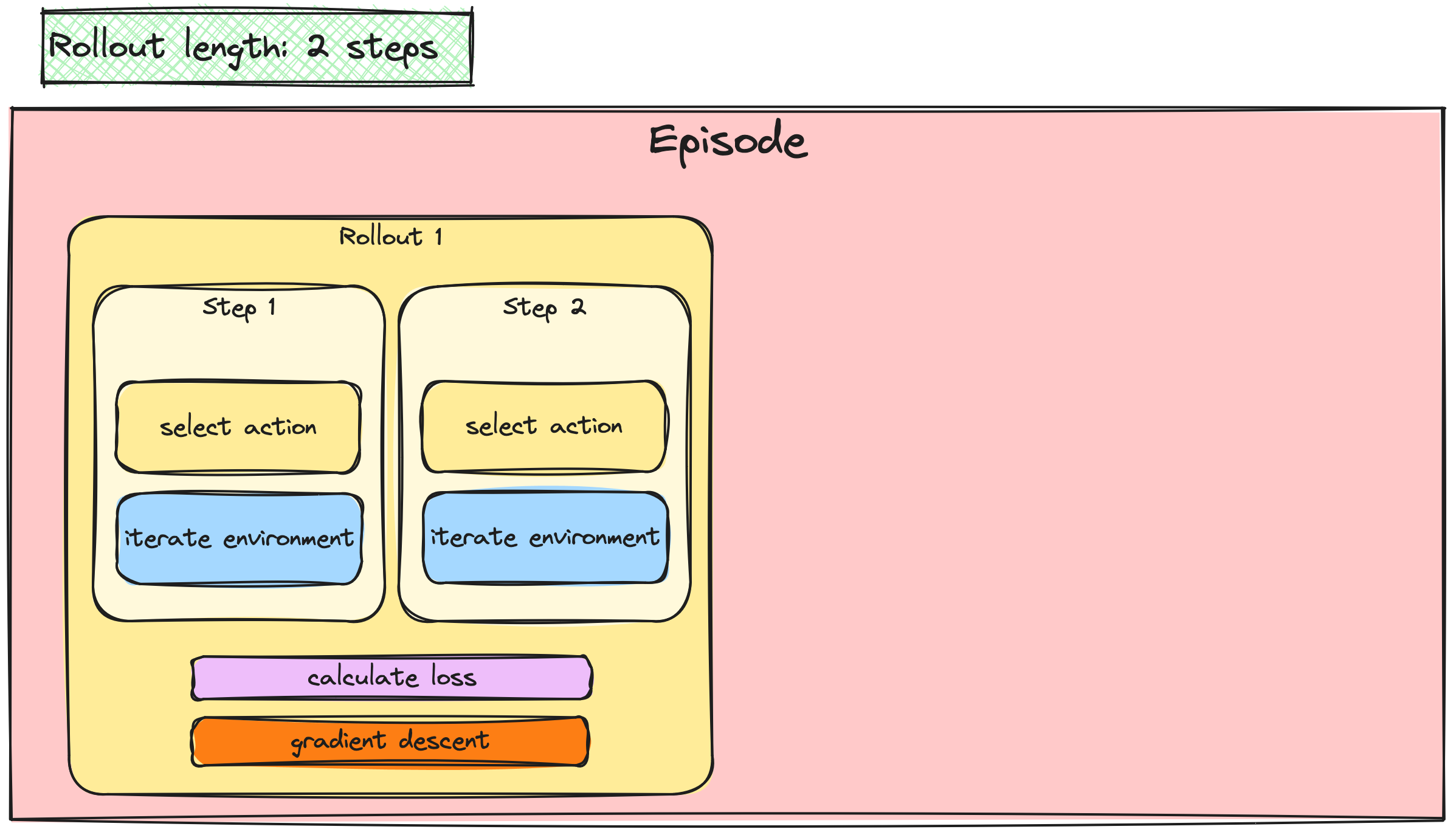
Batching the A2C / PPO updates
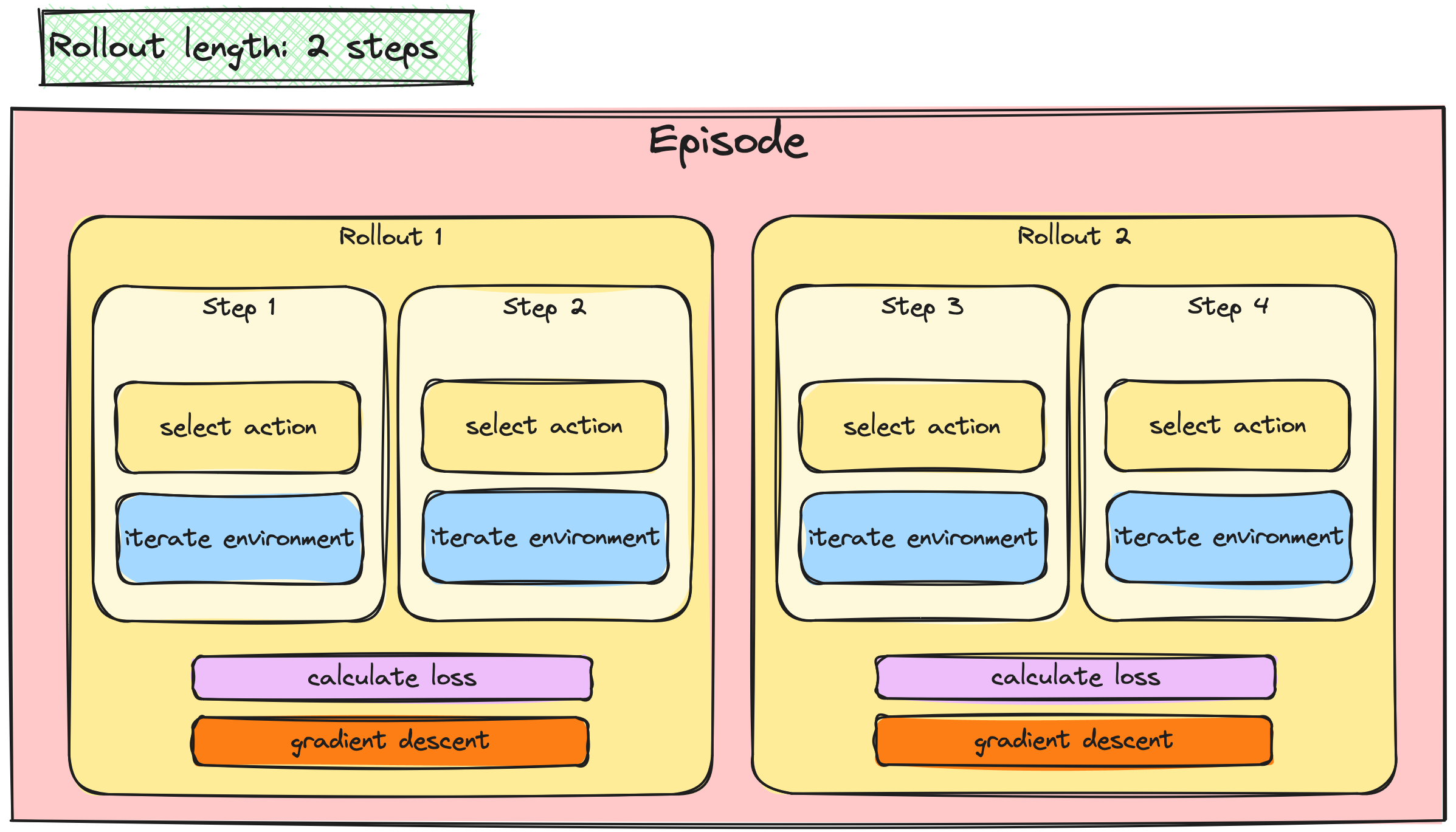
The A2C training loop with batch updates
# Set rollout length rollout_length = 10# Initiate loss batchesactor_losses = torch.tensor([]) critic_losses = torch.tensor([])
- Initiate loss batches
- Iterate through episodes and steps as usual
for episode in range(10):
state, info = env.reset()
done = False
while not done:
action, action_log_prob = select_action(actor,
state)
next_state, reward, terminated, truncated, _ = (
env.step(action))
done = terminated or truncated
actor_loss, critic_loss = calculate_losses(
critic, action_log_prob,
reward, state, next_state, done)
...
The A2C training loop with batch updates
... actor_losses = torch.cat((actor_losses, actor_loss)) critic_losses = torch.cat((critic_losses, critic_loss))# If rollout is full, update the networks if len(actor_losses) >= rollout_length:actor_loss_batch = actor_losses.mean() critic_loss_batch = critic_losses.mean()actor_optimizer.zero_grad() actor_loss_batch.backward() actor_optimizer.step() critic_optimizer.zero_grad() critic_loss_batch.backward() critic_optimizer.step()actor_losses = torch.tensor([]) critic_losses = torch.tensor([])state = next_state
- Append step loss to the loss batches
- When rollout is full:
- Take the batch average loss with
.mean() - Perform gradient descent
- Reinitialize the batch losses
- Take the batch average loss with
A2C / PPO with multiple agents
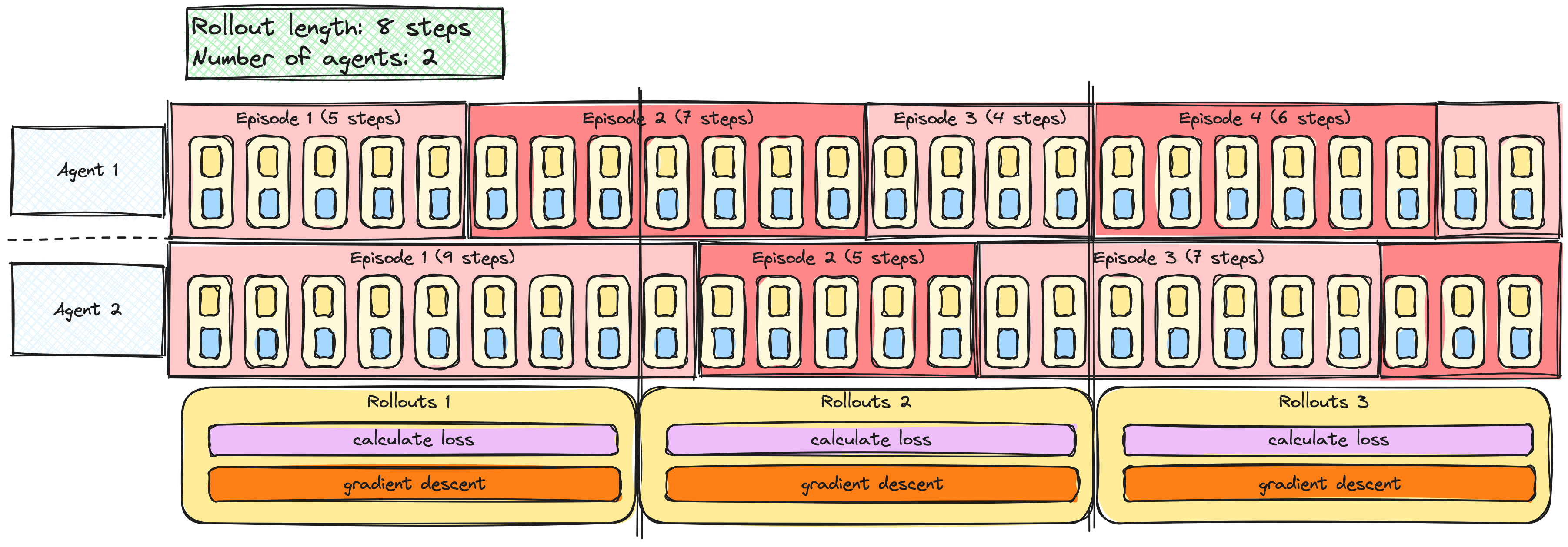
Rollouts and minibatches
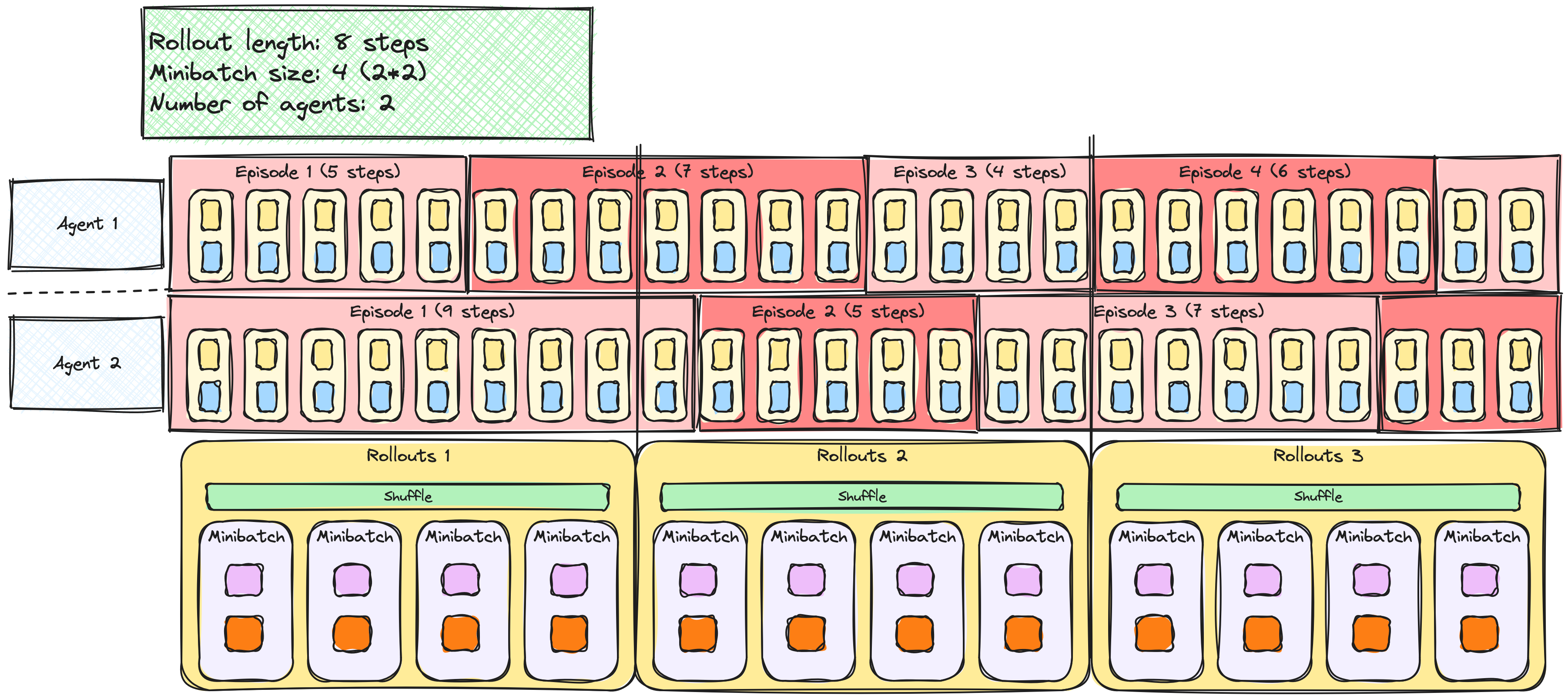
PPO with multiple epochs
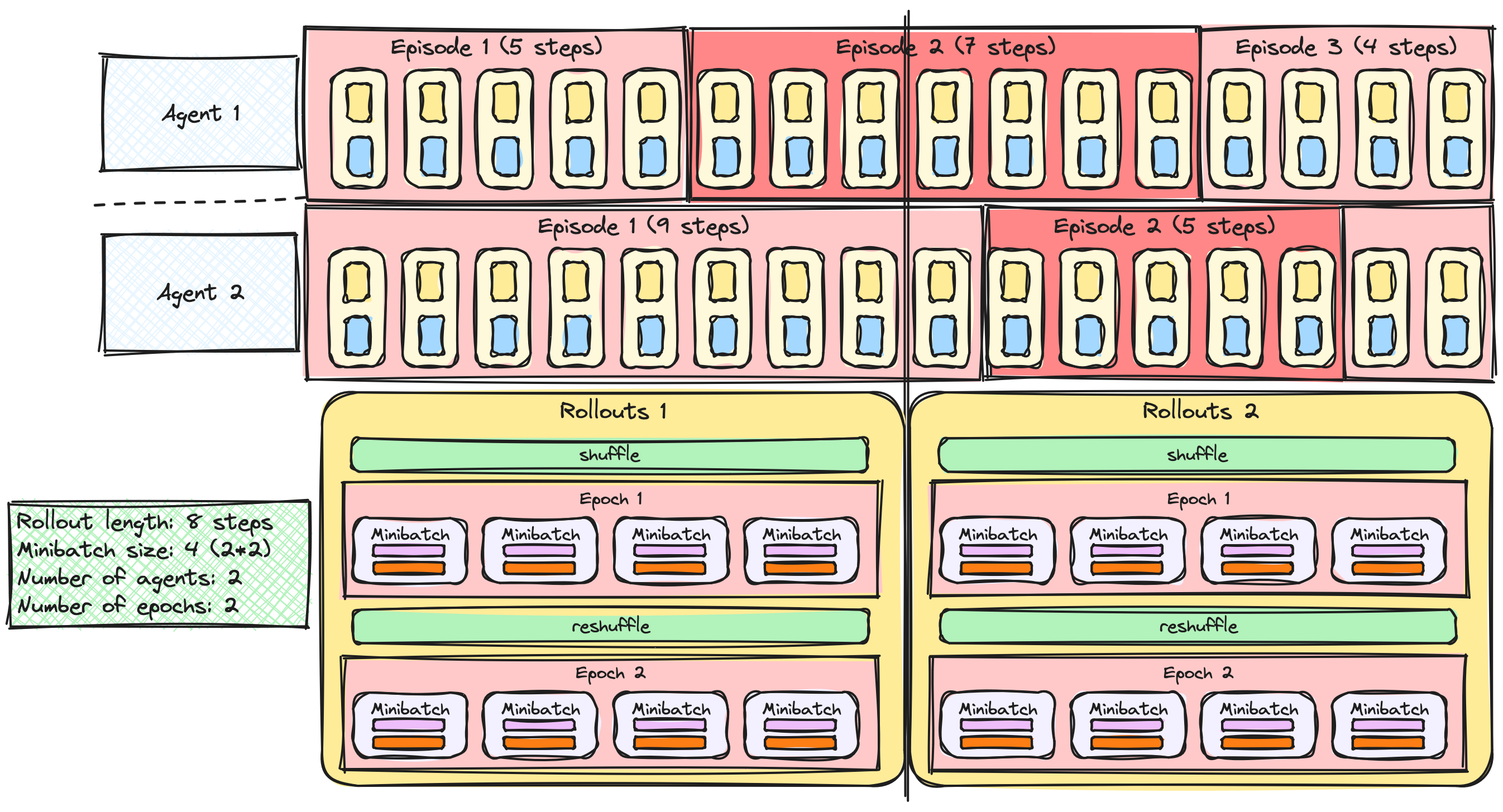
Let's practice!
Deep Reinforcement Learning in Python

